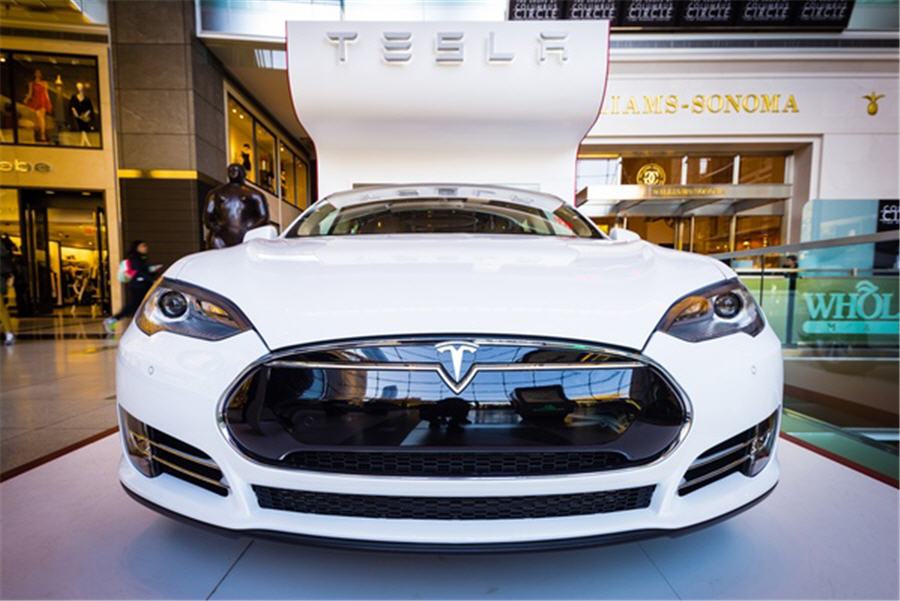Tesla’s plans fire up lithium shares

If you owned shares in Lithium X Energy Corp. (TSX-V:LIX) on February 17, you were probably pretty happy on February 18 – and doubly happy now, as long as you didn’t sell.
Shares continued to move up when the company announced March 3 that it had entered an agreement to acquire 50% of a lithium property in Argentina and were trending in the $1.20 per share range last week. They closed at $1.61 per share on April 5.
 But if you want to make sure your shares continue to increase in value, you should buy a Tesla. And if you’re not ready to buy an electric car just yet, you might want to factor that into your investment strategy when it comes to lithium, according to Mercenary Geologist’s Mickey Fulp.
But if you want to make sure your shares continue to increase in value, you should buy a Tesla. And if you’re not ready to buy an electric car just yet, you might want to factor that into your investment strategy when it comes to lithium, according to Mercenary Geologist’s Mickey Fulp.
Despite owning stock in a junior gold company that recently jumped on the lithium bandwagon – Vancouver’s Nevada Sunrise Gold Corp. (TSX-V:NEV) – Fulp has not succumbed to lithium fever.
“There’s no doubt it’s a bubble,” Fulp said. “I don’t think there’s going to be half a million electric vehicles sold in 2020. Musk has missed every projection for car sales.”
Goldman Sachs is more bullish on lithium, calling it “the new gasoline.” It predicts increased penetration of electric vehicles will boost the global demand for lithium 11-fold by 2025.
Even if the lithium space becomes a flavour-of-the-month investment, that doesn’t mean there isn’t money to be made there.
“You can make lots and lots of money playing bubbles, but you’ve got to foresee the bubble coming, you’ve got to get in early, you’ve got to pick the right company,” Fulp said. “There’s certainly companies that are going to exploit this lithium bubble and do quite well.”
Lithium X is just one of a number of Canadian juniors that have been surfing the lithium wave. It went public in November on the TSX Venture Exchange through a reverse takeover of a shell company called Royce Resources.
On March 18, the company announced it had closed an $8.5 million private placement that was nearly $1 million oversubscribed.
The company has been on a promotional binge, and last week began trading on the Over the Counter Bulletin Board (OTCBB). That might normally raise red flags. Aggressive promoting and trading on the OTCBB is something Howe Street stock promoters do with dubious projects.
But Lithium X has a pretty good pedigree. One of its backers is B.C. mining and film magnate Frank Giustra, who owns an 8% stake, and its executive chairman, Paul Matysek, has a track record of building and selling successful junior mining companies.
“He’s done this three times already,” Fulp said of Matysek. “He sold a uranium company during the uranium boom, he sold a lithium company during the first lithium boom, and he sold a potash company during the potash bubble.”
North America has only one producing lithium mine, Silver Peak in Nevada’s Clayton Valley, which is owned by Albemarle Corp. (NYSE:ALB), a chemical company. Lithium X is one of a handful of juniors that has recently acquired a lithium brine property in the same region.
Two of the top-performing companies for the mining sector on the 2016 TSX Venture 50 list were Canadian lithium juniors: Vancouver’s Pure Energy Minerals Ltd. (TSX-V:PE) and Quebec’s Nemaska Lithium Inc. (TSX-V:NMX).
Meanwhile, Vancouver’s Lithium Americas Corp. (TSX:WLC) – formerly Western Lithium USA Corp. – last week announced a $25 million joint venture with Chile’s Sociedad Química y Minera de Chile SA (NYSE:SQM) – the world’s largest lithium producer – on a lithium project in Argentina.
Lithium is the critical element in lithium-ion batteries, which power everything from smartphones to electric cars. There is already a good market for it, but it could become a lot bigger, if the electric vehicle market booms the way some analysts predict it might.
Fulp said it’s important for investors to understand the lithium business, which is largely controlled by what he calls a “cartel” of just four producers, three of which are chemical companies. Ultimately, a successful junior lithium company is going to be acquired by one of the big players, Fulp said.
Lithium X CEO Brian Paes-Braga concedes that’s a likely outcome.
“The lithium space has shown right when a new player emerges and pokes its head up and threatens that price-making oligopoly, they get bought. And I believe, if we are successful in our vision, same thing’s going to happen to us.”
Lithium occurs in two types of deposits, requiring different extraction methods. Spodumene deposits can be mined using traditional hard rock mining approaches. Nemaska Lithium has a spodumene project in Quebec.
Lithium brine deposits are less capital-intensive and are more like oil or gas extraction than mining. Typically occurring in salt flats, lithium brine aquifers are drilled and the lithium-rich liquid brought to the surface and evaporated.
One challenge that companies like Lithium X might face in Nevada is getting access to water. Lithium brine operations require large amounts of water, which is scarce in the Clayton Valley, where companies like Lithium X, Pure Energy and Nevada Sunrise Gold have acquired properties.
Paes-Braga said water will not be an issue for the company’s Argentine property but agreed that it’s an issue in Nevada.
However, he points to a new approach being tested by Pure Energy, which is piloting a closed-loop technique, developed by Tenova Bateman Technologies, that eliminates the need for evaporation and dramatically reduces water use. He is hoping his company can use either the same or similar technology.
More News
{{ commodity.name }}
{{ post.title }}
{{ post.date }}

Comments